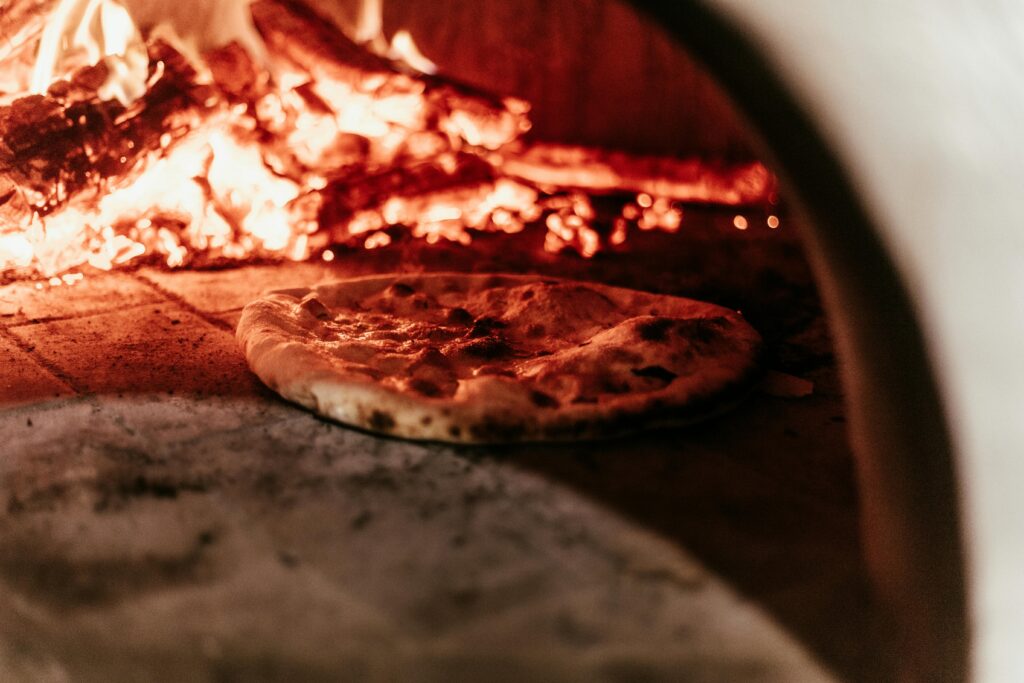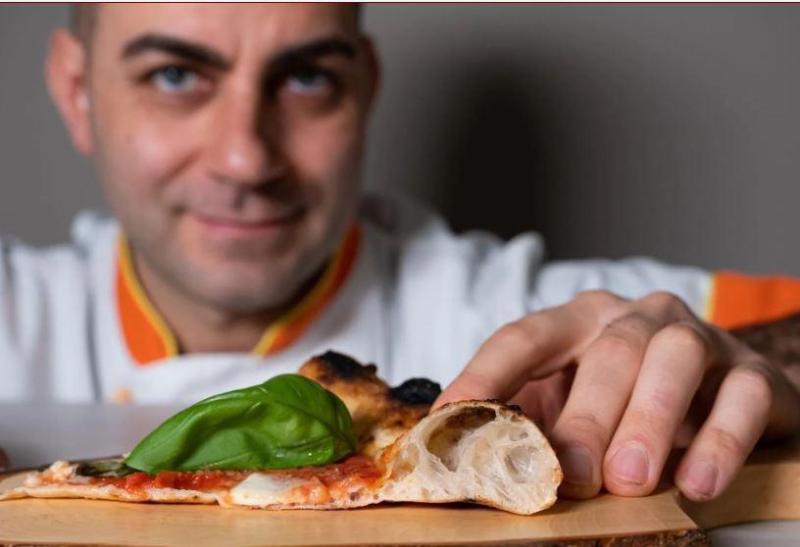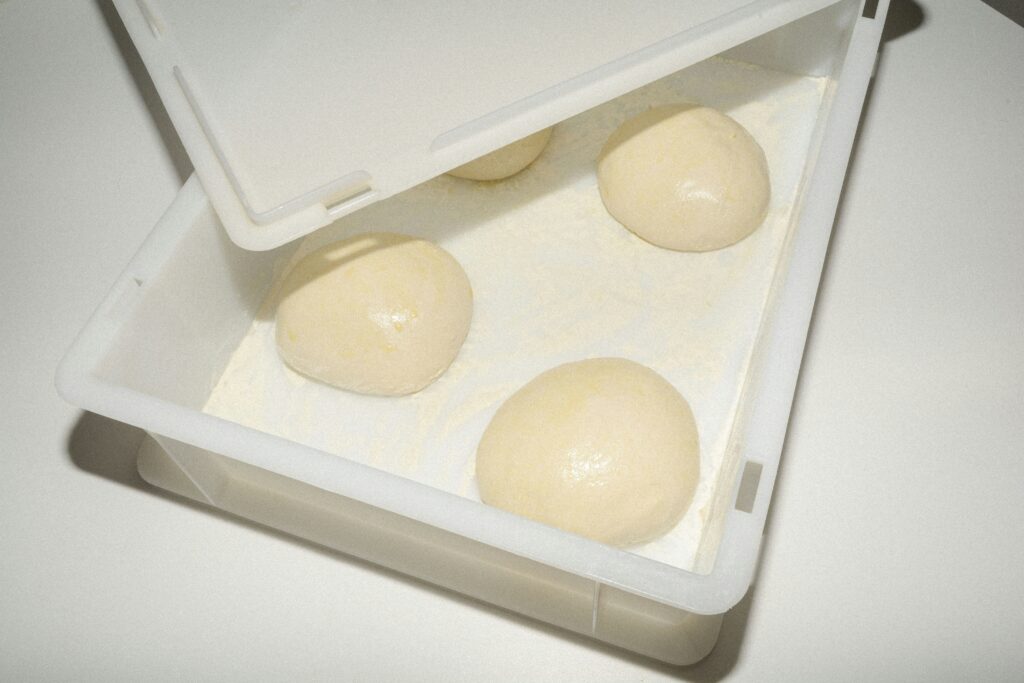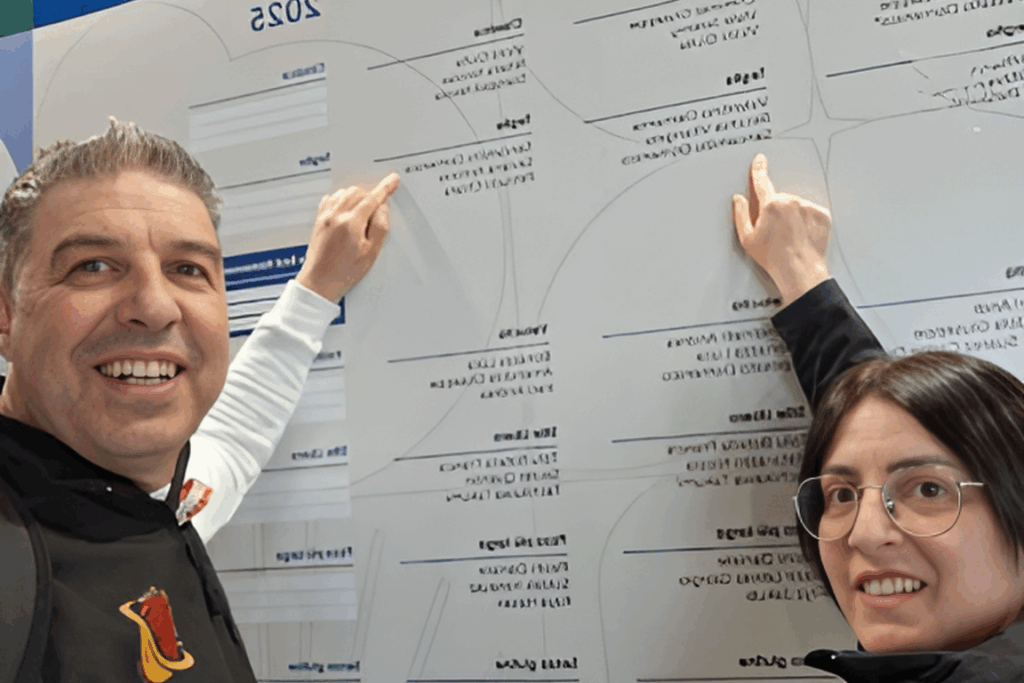In recent years, the use of generative AI (e.g. ChatGPT or DALL-E) has also exploded in the restaurant industry, transforming digital menus and promoting activities on social.
This phenomenon raises questions about ”digital” versus traditional energy consumption in the kitchen. On the one hand, data centers running artificial intelligence models require powerful GPUs and cooling systems that consume significant amounts of electricity; on the other hand, classic pizza ovens also require a lot of energy to maintain high temperatures for cooking, with significant differences depending on the type of power supply.

- Consumption in AI image generation:
AI-based image creation relies on servers equipped with high-performance GPUs. (The acronym stands for ”graphics processing unit,” which is a specialized processor that is primarily responsible for processing graphics and video data.) Recent studies indicate that generating an ”image” requires on average about 0.0029 kWh (2.9 Wh), equivalent to the consumption of a phone charged at nearly 24 percent. In particularly ”heavy” models such as those in HuggingFace, consumption can rise to 0.011kWh. When processing a complex image, a state-of-the-art professional GPU can reach peaks of 300-400W, equivalent to 20 full recharges of a smartphone!
In terms of emissions, considering Italy’s energy mix (about 270 gCo2eq/kWh), this translates into fractions of a gram of CO2 per image (0.001-0.003 kg), which is decidedly small compared to many daily activities in the restaurant industry.
Consumption in baking a pizza:
In contrast, the energy consumed in baking a professional pizza is in the range of a few hundred Wh, depending on the oven. On average, we estimated that an electric oven for an average-sized pizzeria has an energy consumption of about 7-10 kW/h. This means that if the oven is used for 8 hours a day, the total energy consumption could be about 56-80 kW/h per day. The energy required to bake a pizza in a professional setting is therefore basic significantly more than that for generating an image.To give you a roughly accurate figure, we estimated that:
- A professional electric oven consumes about 0.44 kWh per pizza (including preheating)
- A commercial gas oven requires between 0.5 and 0.8 kWh per pizza, having to compensate for greater dispersion
- A traditional Neapolitan wood-fired pizza oven draws about 1.86 kWh per pizza (equivalent to the energy value of wood
Translating these values into CO2 emissions:
- Electric oven produces about 0.12 kg of CO2 per pizza (equivalent to about 1km by car)
- Gas oven emits about 0.16 kg CO2 per pizza (equivalent to 1.3 km by car)
- The wood-fired kiln, using certified wood, has net emissions that are considered ”biogenic,” virtually zero in the long-term analysis.
Baking a pizza thus generates dozens of grams of CO2, while an IA image only a few grams.

AI for Energy Efficiency in the Kitchen
Artificial intelligence solutions can significantly contribute to energy savings in the restaurant industry by improving operational efficiency:
- Smart sensors and ”smart” controls automatically adjust consumption of lights, air conditioning and refrigerator monitoring
- Demand forecasting models optimize ingredient preparation and oven preheating at peak times
- AI-based systems report efficiency losses (such as poorly insulated plates) and suggest optimal firing cycles
- Advanced algorithms for inventory and flow management in the kitchen also reduce food waste, indirectly lowering consumption throughout the supply chain. For example:
- Catering company Elior and the more well-known IKEA have pioneered with startup ”Winnow” an AI system(Winnow Vision) that monitors food waste in canteens, aiming to reduce food waste by 30 percent and CO2 emissions per meal by 12 percent
Digital and culinary sustainability: toward new horizons
The comparison highlights an interesting reality: generating an image via AI requires energy on the order of a few Wh, while baking a pizza consumes hundreds or thousands of Wh. AI-related CO2 emissions are thus almost negligible compared to those of traditional cooking, but the real innovation lies in the integration of the two worlds. Artificial intelligence offers further opportunities for energy sustainability in restaurants through:
– Optimization of thermal cycles: algorithms that learn from cooking habits can automatically adjust the turning on and off of ovens, reducing preheating time by up to 15%.
– Predictive maintenance: intelligent monitoring systems can identify anomalies in energy consumption before they become problems, extending equipment life.
– Sustainable menu engineering: AI can analyze the carbon footprint of ingredients and suggest combinations that maintain gastronomic identity while reducing environmental impact.
– Integrated energy-water management: platforms that simultaneously optimize water and electricity consumption, with documented savings of up to 20% in professional dishwashers.
AI use cases already demonstrate the effectiveness of these solutions in reducing waste and operational costs. Particularly promising is the application of federated learning models that allow restaurants to share anonymous consumption data, creating category- and size-specific energy efficiency benchmarks.
In this dialogue between technological innovation and culinary tradition, a future is emerging in which every kilowatt-hour saved contributes as much to economic sustainability as it does to environmental sustainability: no longer worlds apart, but allies in the creation of a more efficient and conscious restaurant industry.
The added value of AI lies not only in its reduced energy footprint but in its ability to orchestrate all processes toward a common goal of resource optimization.



